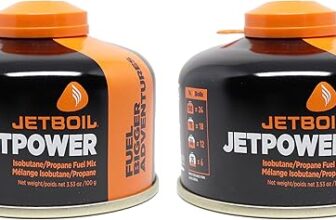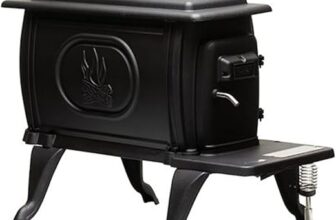
This comprehensive step-by-step guide outlines efficient techniques for packing and unpacking your Teton Sports Universal Sleeping Pad, ensuring its longevity and ease of transport for outdoor enthusiasts. By following these methods, you will learn how to roll your sleeping pad properly, secure it for storage, and unpack it effortlessly when you’re ready to set up camp. This guide is designed to help you maintain your sleeping pad’s quality while enjoying comfort and convenience on your outdoor adventures.



50 Must-Have Camping Gear and Gadgets on Amazon for Elevating Your Outdoor Experience
Prepare Your Sleeping Pad
- Inspect your sleeping pad for dirt or debris; clean it with a damp cloth or sponge to keep it fresh.
- Allow the sleeping pad to air dry completely before packing to prevent mold or mildew.
- Examine the entire surface of the pad for any punctures or damage; use a repair kit if necessary to fix any holes.
- Remember to roll or fold the sleeping pad according to the manufacturer’s instructions to ensure easy transport and storage.
Deflate the Sleeping Pad
- Open the valve on the sleeping pad completely to initiate the air release.
- Position yourself at the opposite end of the valve.
- Roll the pad tightly, starting from this opposite end, to force out as much air as possible.
- Continue rolling until you’ve expelled most of the air, then fold the pad for compact storage.
Roll the Sleeping Pad
Start by holding the deflated sleeping pad at the foot end. Begin rolling it tightly towards the head end, applying even pressure to compress the pad as you go. Make sure to keep the roll as tight as possible to minimize bulk, ensuring a snug fit for the storage bag. Once you reach the head end, secure the roll with a strap or Velcro if available, preventing it from unrolling during transport.
Secure the Roll
Use the attached straps or any provided ties to secure the rolled sleeping pad. Wrap the straps snugly around the pad to keep it in place. Ensure the ties are tightly fastened to prevent any slipping or unrolling during transport. Check that the pad remains compact and secure before moving it.
Pack the Sleeping Pad
Place the secured sleeping pad into its storage bag, ensuring that the pad is rolled tightly and that no parts are left sticking out. Check that the sleeping pad fits snugly in the bag to prevent it from shifting during travel. Utilize any additional pockets on the storage bag for small items such as a flashlight, repair kit, or snacks for easy access on your trip. Make sure to zip or fasten the storage bag securely to keep everything contained.
Prepare for Unpacking
Find a clean, dry area to unpack your sleeping pad. Look for a spot away from rocks, branches, or any sharp debris that might puncture the pad. Use your foot to clear away small stones and twigs from the surface. Ensure the area has a flat, even ground to maximize comfort when sleeping.
Remove from Storage Bag
Remove the sleeping pad gently from its storage bag. Hold the bag with one hand while using the other hand to grasp the pad, ensuring a firm but careful grip. Avoid pulling too hard; instead, wiggle the pad slightly to help it slide out smoothly. Inspect for any fabric or seam damage as you extract it to ensure the pad is in good condition for your next use.
Inflate the Sleeping Pad
Open the valve, ensuring that it is free from dust or debris before beginning the inflation process. Use your breath or an air pump—depending on your setup—for efficient inflation, and blow into the valve or operate the pump until the sleeping pad reaches your desired firmness. Check for firmness by pressing down on the surface; you may need to add air if the pad feels too soft. Once you achieve the perfect level of inflation, close the valve tightly to prevent any air from escaping during your rest.
Streamlining Your Packing Process
In conclusion, mastering the packing and unpacking techniques for your Teton Sports Universal Sleeping Pad not only enhances your camping experience but also prolongs the lifespan of your gear. By adhering to the tips outlined in this guide, you can streamline your outdoor setup process, ensuring that you are always prepared for your next adventure with minimal hassle. Embrace these efficient methods, and you’ll be well on your way to enjoying comfort in the great outdoors. Happy camping!
Essentials You’ll Need

Smart Packing Strategies
Step-by-Step Guide to Set Up and Optimize Your Teton Sports Universal Sleeping Pad
- Unfold and Inflate: Begin by carefully unfolding the sleeping pad. Use the built-in valve to inflate the pad. Depending on the type of valve, you may need to either blow into it, use a pump, or open a two-way valve to allow air to fill the pad
- Check for Leaks: After inflating the pad, inspect it for any leaks. Spray a soapy water solution over the surface and look for bubbles, which indicate air escaping. If needed, patch any leaks using the repair kit provided
- Choose a Suitable Location: Lay the sleeping pad on a flat and clean surface, such as a tent floor or a designated camping area. Avoid sharp objects on the ground that could puncture the pad
- Adjust Firmness: If the pad is over-inflated or under-inflated, you can adjust its firmness by releasing some air through the valve or adding more as needed. Find a comfort level that suits your sleeping preferences
- Packing Up: When you’re ready to pack up, open the valve to deflate the sleeping pad. Roll it up tightly to remove all air, and store it in the carrying bag for easy transport. Ensure it is clean and dry before stowing it away for future use
Common Questions About the Teton Sports Universal Sleeping Pad
Yes, the Teton Sports Universal Sleeping Pad typically comes with a limited lifetime warranty. This warranty generally covers defects in materials and workmanship, providing customers with a measure of assurance regarding the product’s quality and durability. For specific details and conditions regarding the warranty, it’s advisable to check the manufacturer’s website or contact their customer service.
Yes, the Teton Sports Universal Sleeping Pad is designed to be compatible with standard sleeping bags and tents. Its dimensions and features fit well within typical sleeping bag sizes, allowing for a comfortable and secure sleeping experience. Additionally, the pad can be easily rolled up and packed, making it suitable for use in various standard tents. Always check the specific sizes and compatibility details on the product label before use to ensure the best fit for your camping gear.
The Teton Sports Universal Sleeping Pad, when fully inflated, measures 72 inches in length, 20 inches in width, and has a thickness of approximately 2 inches. This makes it suitable for providing comfort during camping and outdoor activities.
Yes, there are specific maintenance and cleaning instructions for sleeping pads, though they can vary depending on the material and type of pad. Here are some general guidelines:
- Regular Cleaning: It’s advisable to wipe down the sleeping pad with a damp cloth and mild soap after each use to remove dirt, sweat, and body oils.
- Deep Cleaning: For a more thorough cleaning, you can hand wash the sleeping pad in warm water using a gentle soap. Avoid using bleach or harsh detergents, as they can damage the material.
- Drying: After cleaning, make sure to air dry the pad. Avoid direct sunlight for prolonged periods as this can degrade the material. Lay it flat or hang it to dry completely before storage.
- Storage: Always store the sleeping pad unrolled and inflated in a dry place to help maintain its shape and prevent creases. Avoid compressing it for long periods.
- Avoid Chemical Products: Refrain from using chemical cleaners or sprays, as they can compromise the integrity of the pad.
- Check for Damage: Periodically inspect for any leaks, punctures, or signs of wear, and repair them promptly according to the manufacturer’s recommendations.
Always refer to the specific manufacturer’s instructions for your particular sleeping pad model, as those will provide the most accurate guidance.









Could you do a follow-up article on how to choose the right sleeping pad for different types of camping? I’m considering options for both car camping and backpacking and would love some advice!
That’s a fantastic idea! I’ll definitely consider writing about how to choose the right sleeping pad for various camping styles. Stay tuned!
I’m a bit confused about the deflation step. How do I make sure all the air comes out without damaging it? Is there a technique?
No worries, it’s common to have questions! To deflate, open the valve and gently press down on the pad to push out the air. Just don’t fold it too aggressively to avoid damaging the material!
Hey, this guide is super helpful! I just got the Teton Sports Universal Sleeping Pad and was kinda lost on how to pack it. Any tips on how to clean it after a camping trip? It gets so dirty after a weekend outdoors!
Awesome guide! I just followed these steps before my trip last weekend, and it made packing so much easier. I even had time to make s’mores! 😂
Glad to hear it helped you out! S’mores are a must on any camping trip! Enjoy your future adventures!
Thanks for the feedback! To clean your Teton Sports sleeping pad, just use a mild soap and water solution. Wipe it down with a cloth, then let it air dry completely before storing it. Happy camping!
This is awesome, but can you recommend a good storage bag for the sleeping pad? I want something that won’t take up too much space in my backpack.
Great question! A compression sack like the Sea to Summit Ultra-Sil Dry Sack works well for sleeping pads. It keeps it compact and dry, perfect for backpacking!